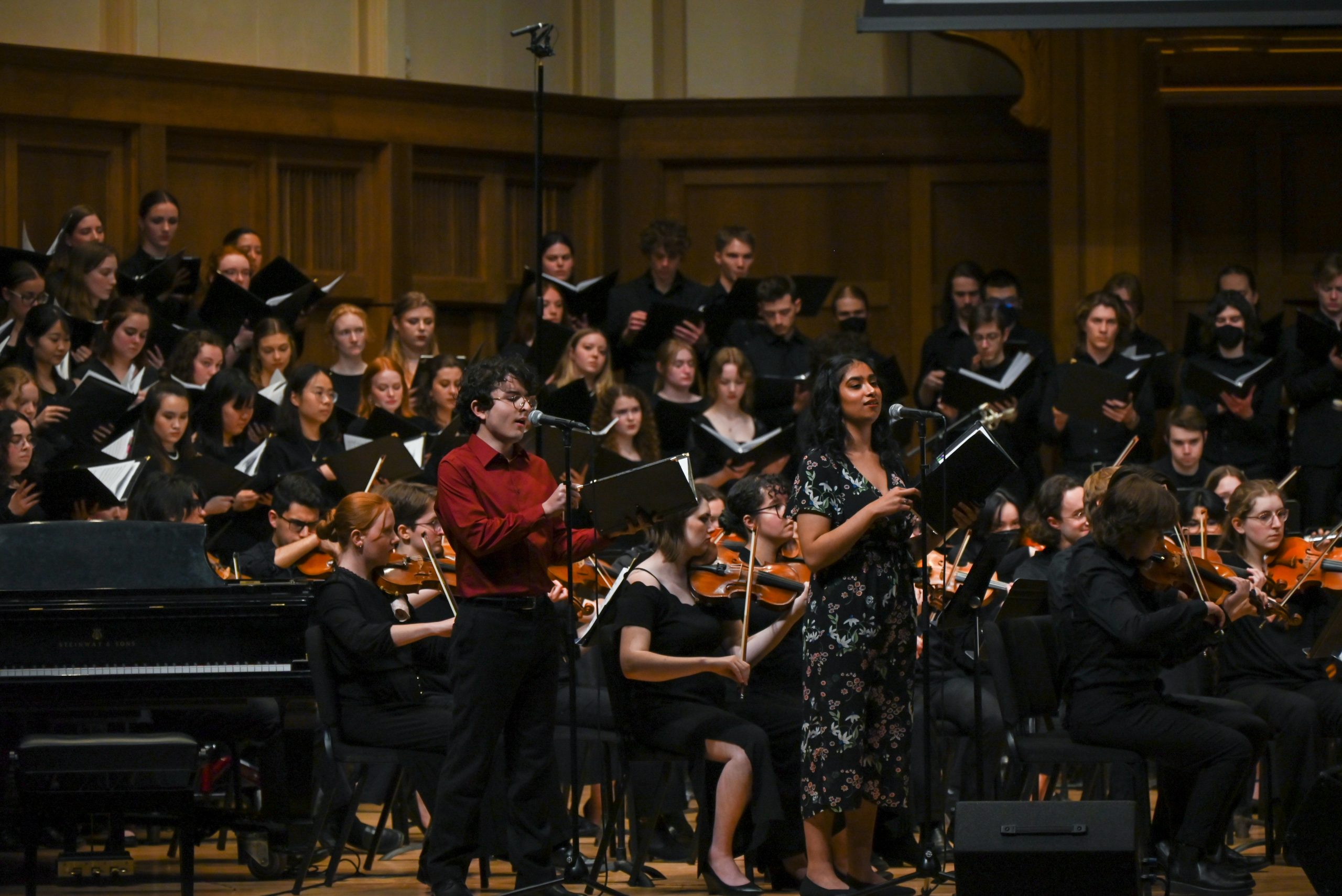When I think about classical music, I often find myself exploring the same tropes of thought: aging men with powdered wigs writing pieces for royalty, symphonies of talented music readers performing ancient melodies in front of the wealthy and white, and so on. While these thoughts are equal part social bias and objective history, there is way more to be said about classical music, especially newer classical. In fact, this genre has found a place at Lawrence in the Masterwork and in the larger music landscape in recent years. Before exploring the larger classical music canon, let’s zoom in on Friday, April 21’s performance.
The Masterwork is an enormous annual performance consisting of both the Lawrence orchestra and every Lawrence choir. Every Spring Term, a new conductor takes the reins and displays before students, staff, family, friends and curious passersby an emotional and involved concert. This year, Associate Professor of Music and Co-Director of Choral Studies Phillip Swan and two additional performers orchestrated an amazing and dynamic concert.
The first 10 minutes was a sweeping instrumental. The once murmuring audience sat silent in the presence of the orchestra. Amidst them, I was reminded of the power of live music, especially in settings as grand and complex as a symphonic performance. It’s all too tangible and encompassing to ignore.
After the introductory piece, an additional piece concerning the tragedy of composer Ludwig van Beethoven’s hearing loss was performed—this time, with the additional power of the choirs. It was at times heavy, operatic and dissonant, but had occasional patches of softness. It was an amazing display of dread and acceptance.

Then came the main event. Each following piece was themed around a different world religion. Everything from Christianity to Zoroastrianism had a moment to shine. While it did highlight some of the unique differences between religions, this was largely a unifying experience. Live music, especially live music with grand instrumentation, has the power to connect. Paired with the thematic push of diversity within religion, it became a great learning experience.
I left the concert not only with a better understanding of each individual religion celebrated, but also with a healthier outlook on religion as a whole. From what I gathered, religion in its purest form is meant to propagate kindness, unification and self-actualization. I get the sense that, while everyone’s experience was different, most people were able to come to some new understanding of religion or music during this performance.
I’ll use what space I have left to ask something of you: see some live music, tackle some problems, try and think through your biases, wherever your discomfort lies: be it in classical music, religion or whatever. Chase your discomfort.


